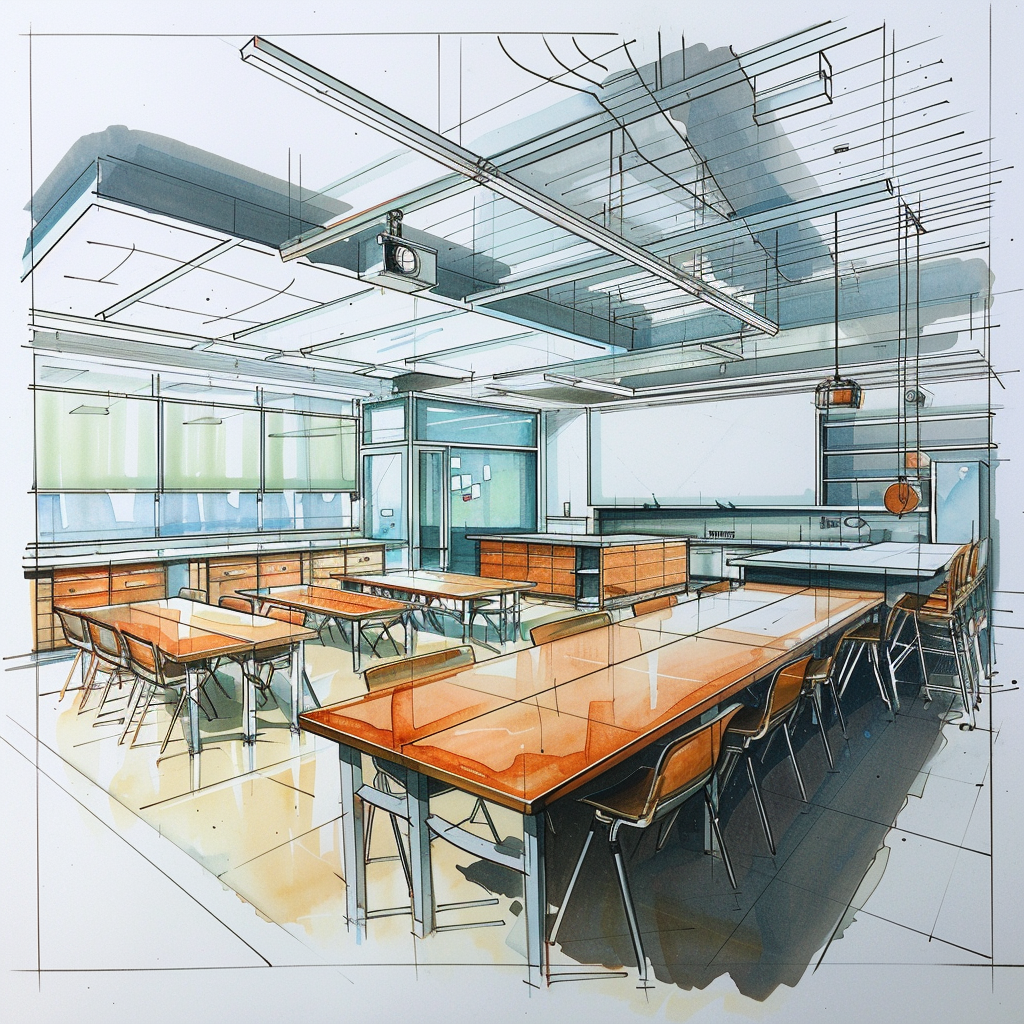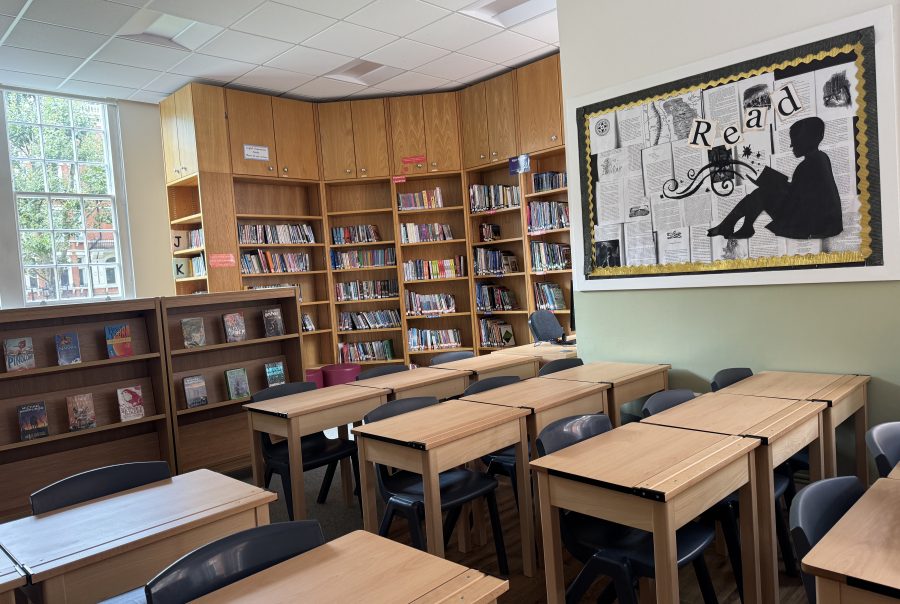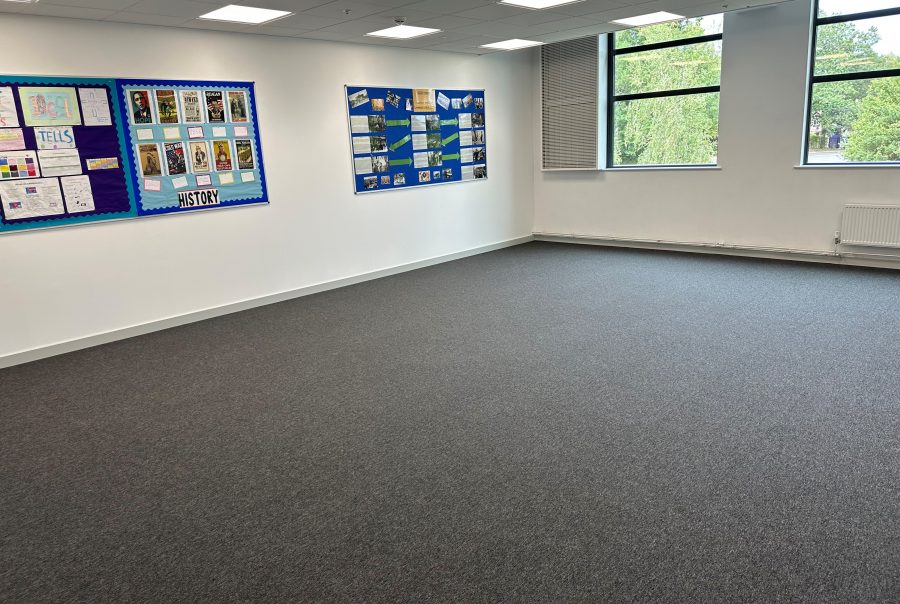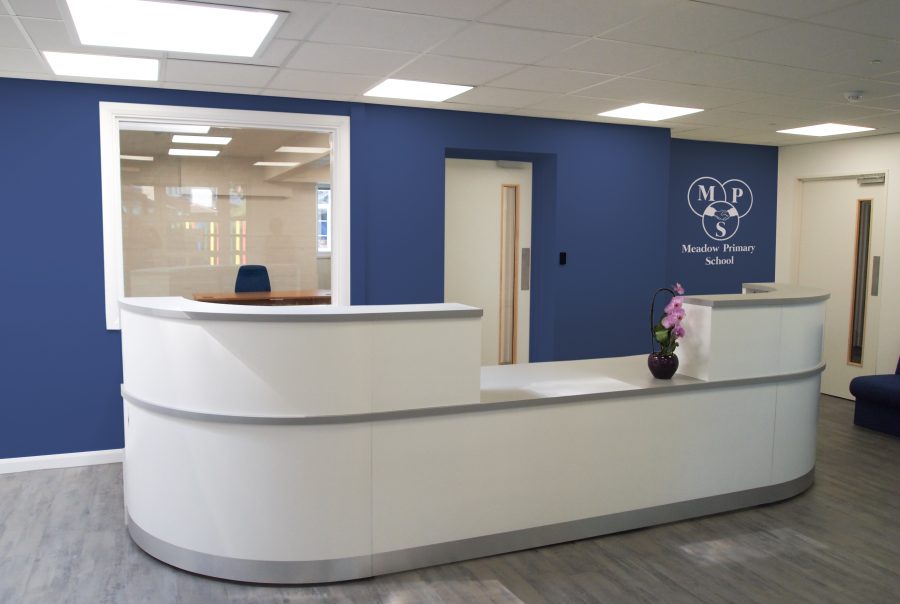Creating distraction-free classrooms isn’t merely about eliminating external disturbances; it’s about cultivating environments that inspire curiosity and foster deep learning. In 2024 we are aware that there is a vast spectrum of neurodiversity within the population. It is essential that spaces for learning are free from distraction. Classrooms should be like an another member of staff, supporting the teacher to deliver outstanding learning experiences. With a holistic understanding of evidence-based design principles, educators can transform classrooms into vibrant hubs of exploration and growth, empowering students to thrive in their educational journey. Design, underpinned by research, should be shaping modern learning spaces. If the classroom you are teaching in looks the same as the classroom you were taught in then it is time for change.
Lighting: Illuminating Learning Pathways
Lighting is a crucial aspect of classroom design. Natural light is the gold standard, as it promotes alertness and has been linked to improved academic performance. Scientific studies have long championed the benefits of natural light in educational settings. A study published in the journal “Building and Environment” (2015) found that students exposed to daylight in their classrooms demonstrated improved academic performance, including higher test scores in reading and maths, compared to those in artificially lit environments. Moreover, exposure to natural light can improve mood and reduce stress. A study on ‘Daylighting Impacts on Human Performance in School: L. Heschong, R.Wright,S. Okura: 2002’ also found that natural light positively contributes to a higher academic performance but where artificial light is used it should operate at a lighting level of 400lux.

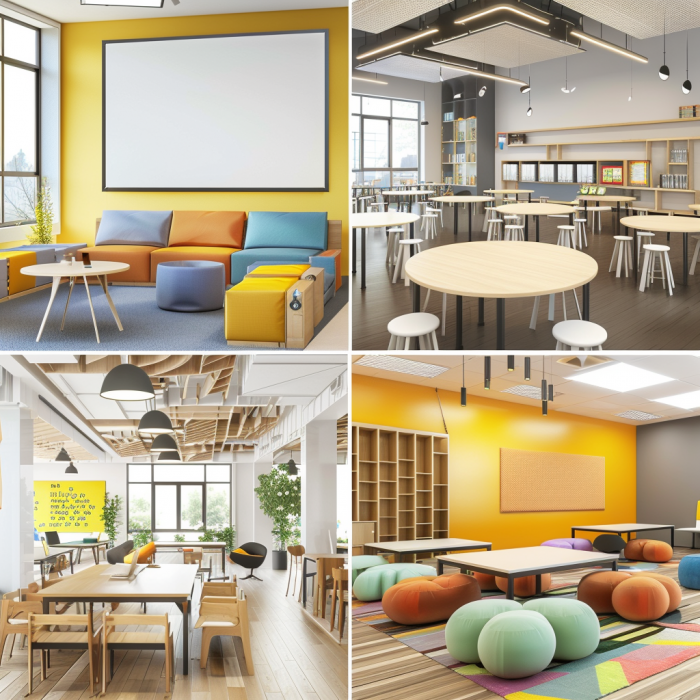
Furniture: Building Blocks of Focus
The right furniture can make all the difference in a classroom. Ergonomic chairs and desks that support proper posture can enhance comfort and focus. When selecting furniture for classroom refurbishments, consider versatility and mobility. Flexible seating options such as bean bags or standing desks can accommodate different learning styles and encourage movement, keeping students engaged.
The ergonomic design of classroom furniture is more than just a matter of comfort—it influences learning behaviors and outcomes. Research indicates that properly designed chairs and desks support posture and musculoskeletal health, thereby reducing discomfort and fatigue. Cornell University have been at the forefront of research into ergonomics in the classroom. Their findings reveal how crucial ergonomic furniture and equipment is to reducing musco-skeletal issues.
Flooring: Anchoring Learning Environments
Flooring might seem like a minor detail, but it can greatly impact the classroom environment. Durable, easy-to-clean flooring is essential for maintaining a tidy space conducive to learning. Additionally, carpeting or area rugs can absorb sound, reducing noise distractions. When designing school refurbishments we opt for flooring materials that are both functional and aesthetically pleasing.
Flooring materials play a significant role in creating conducive learning environments. Studies suggest that appropriate flooring choices contribute to acoustical comfort, mitigating noise distractions and enhancing concentration. Consider a variety of flooring finishes, including some soft, carpeted zones. Research published in the “Journal of Architectural Engineering” (2016) indicates that carpeted flooring can significantly reduce noise levels in classrooms, creating quieter environments conducive to focused learning. Additionally, a study by the University of California, Berkeley, found that clean and well-maintained flooring positively influenced students’ perceptions of classroom cleanliness and comfort.


Wall Finishes and Displays: Harmonizing Stimulus and Serenity
Walls provide a canvas for both inspiration and distraction. The visual environment of classrooms significantly impacts student attention and behavior. Scientific research underscores the importance of striking a balance between stimulating displays and calming backgrounds. A study published in the “Journal of Educational Psychology” (2017) found that classrooms with visually stimulating displays related to the curriculum enhanced student engagement and learning outcomes. However, excessive visual clutter can lead to sensory overload and distractibility, as noted in research conducted by the University of Michigan’s Center for Human Growth and Development.
Keep decorations relevant to the curriculum and regularly rotate displays to maintain novelty. Ensure there is a sense of space and order to wall decorations. Limit display boards to an area of wall as opposed to saturating the space in posters. Choose clever storage to hide resources when not being used.
Space Planning and Layout: Orchestrating Learning Dynamics
The layout of a classroom can significantly impact the flow of learning activities. The layout and organization of classroom spaces influence the flow of educational activities and social interactions. Evidence suggests that flexible seating arrangements promote collaboration and creativity, facilitating dynamic learning experiences. A meta-analysis published in the “Review of Educational Research” (2020) concluded that flexible seating arrangements in classrooms positively impact student engagement and academic performance. Furthermore, research by the American Institutes for Research highlights the importance of thoughtfully planned layouts in optimizing student interactions and instructional practices.
Consider the arrangement of desks to facilitate group work and discussions while minimizing distractions. Flexible seating arrangements allow for easy reconfiguration based on lesson plans and activities. When refurbishing classrooms we prioritize layouts that promote interaction and collaboration while providing clear sightlines for teaching and supervision.
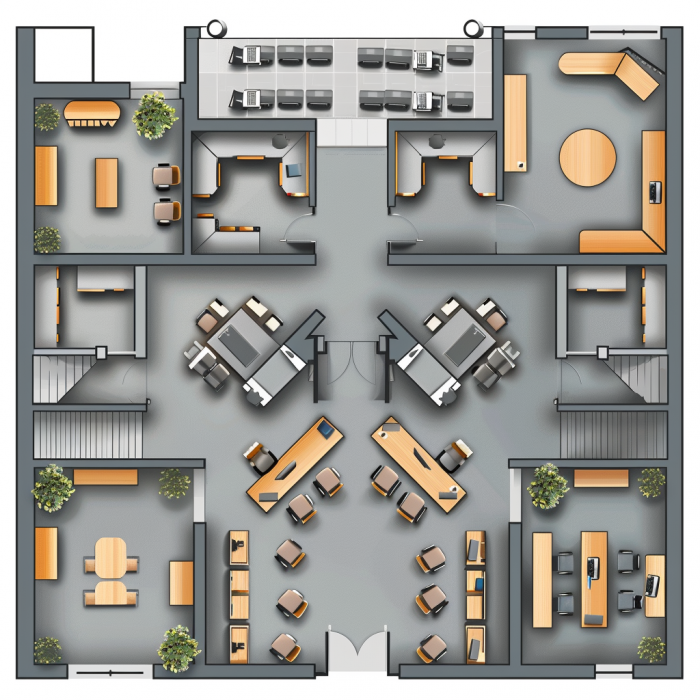
In the pursuit of distraction-free classrooms, evidence-based design principles serve as guiding beacons. By harnessing scientific insights into lighting, furniture, flooring, wall finishes, and layout, educators can shape environments that nurture focused learning and active engagement. School refurbishment projects offer opportunities to reimagine classroom spaces with a keen focus on optimizing student experiences and outcomes.
Key Takeaways:
Lighting: Harness the power of natural light and adjustable artificial lighting to support cognitive performance and well-being.
Furniture: Prioritize ergonomic design and flexibility to promote comfort, movement, and engagement.
Flooring: Choose materials that enhance acoustical comfort and cleanliness, minimizing distractions and promoting focus.
Wall Finishes and Displays: Strike a balance between visual stimulation and tranquility to create an optimal learning environment.
Space Planning and Layout: Design flexible and inclusive layouts that facilitate collaboration, interaction, and effective teaching practices.
Creating distraction-free classrooms isn’t merely about eliminating external disturbances; it’s about cultivating environments that inspire curiosity and foster deep learning. With a holistic understanding of evidence-based design principles, educators can transform classrooms into vibrant hubs of exploration and growth, empowering students to thrive in their educational journey.
sustainable classroom


